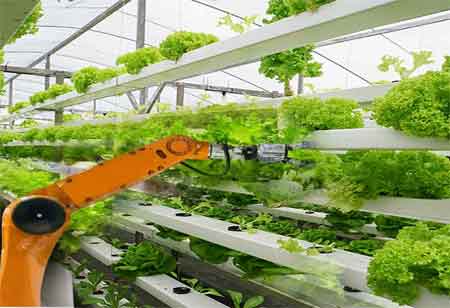Thank you for Subscribing to Agri Business Review Weekly Brief
Cloud Farming In Agriculture
Several people have considered the ultimate objective of technology.

By
Agri Business Review | Monday, November 21, 2022
Stay ahead of the industry with exclusive feature stories on the top companies, expert insights and the latest news delivered straight to your inbox. Subscribe today.
Edge computing seems to be stepping on cloud farming's toes with real-time connectivity.
Fremont, CA: Several people have considered the ultimate objective of technology. Still, it took us around 200 years to understand that technology must help people sustain their lives.
Are there a better means to live up to this mission than by guaranteeing efficient, sustainable, and (almost) zero-waste farming? There is not; cloud computing in agriculture has already been functioning on this task for years. As a result, cloud software development services are flourishing.
Nevertheless, edge computing seems to be stepping on cloud farming's toes with real-time connectivity. Cloud computing in agriculture has been a discovery and a game-changer for the industry.
Still, its restrictions, especially the absence of real-time connectivity, have caused the introduction of edge computing, enabling a faster and fiercer response to perils enforced on agribusinesses by weather, soil, poorly automated machinery, etc.
Cloud farming in agriculture
Cloud computing in agriculture can aggregate data from tools such as soil sensors, satellite images, and weather stations to support farmers make the right decisions about managing their crops.
The cloud's analytical capabilities also help farmers in learning their production environment. For instance, interpreting drone data for enhanced crop management decisions is another advantage cloud computing in farming delivers. Generally, there are seven major deliverables:
• Crop-related details. Data processing can support farmers collect and analyzing details on crops grown in the past and present, supporting future decision-making.
• Weather report. Edge computing can offer real-time region-specific weather reports, which is crucial for farming, especially allowing to receive forecasts for specific seasons.
• Soil information. Agricultural decision-making heavily depends on soil information, as apart from a soil profile, a farmer must know the soil's past manner and forecast future trends. Knowing, for example, whether the soil tends to turn acidic or alkaline might be essential for further farming actions.
• Growth monitoring. Mathe growth of many crops in various regions at regular intervals provides farmers with a lot of information on growth intervals, which is important for sustainable and lucrative farming.
• Expert consultation. Edge computing generates a chance for a real-time solutions hub where farmers can consider their real-time issues.
• Farmers' data. Data from farmers can be seized across a whole region, depicting a great chance for step-by-step agricultural policymaking and strategizing.
• eCommerce. In rural areas, agricultural businesses can access markets directly, avoiding exploitation. According to cloud computing, an agricultural management information system can directly support farmers in selling their products.





